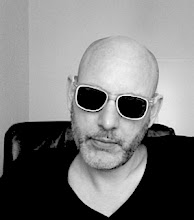In 2007-2008, relatively freshly arrived in the city, I undertook an experiment. Embedding hundreds of jpegs and allusive, fragmentary narratives in a kmz file. I tried to build a model of the neighborhood in which I lived, a place I had known and loved for many years. The Invisible Kiez.
As the capabilities of the Google Earth platform developed on the Mac, it became possible to embed video, overlay images and introduce 3d models. Intoxicated by these once novel possibilities I raced home from the office to build virtual towers of historic maps and carefully threaded narrative loops, adding my own virtual footnotes to the graffiti.
Inspired by Walter Benjamin’s Passagen Werk (Arcade's Project) I set about researching the history of the area. A troubled and complex history (as is all of Berlin’s) and a history that was and is threatened by erasure, as all histories ultimately are. I documented endless walks along the same streets, an amateur psychogeographer trying to fix specific atmospheres of place. In torn posters and the secret ciphers of the graffiti writers I glimpsed other narratives, observed the sun falling through the leaves, the changing seasons.
From the outset the motive was perhaps slightly defensive. It was clear, already that Google Earth was clogged with commercial datasets and advertising that were multiplying incessantly, mirroring the pressures of gentrification in the non-virtual world. In this land grab it seemed apposite to establish other claims on this locale, to record fleeting impressions and fix memories, real or imagined, at precise geographical coordinates.
Perhaps inevitably the project collapsed beneath its own weight, the complexity of the model I had built reducing the browser to a crawl. I found myself overwhelmed and slightly obssesesed. Like the citizens of Borges' cartographically preoccupied empire, I was mistaking the map for the territory but beyond this I had the growing feeling that the Kiez’s secrets were perhaps better left invisible and I dismantled the model and removed the geo tags and much of the text. Whilst abandoning the project felt a little like burning a box of love letters, I was sure I had done the right thing (as recent pieces in the Spiegel and TAZ possibly confirm). All that there remains to document are fragments……….




